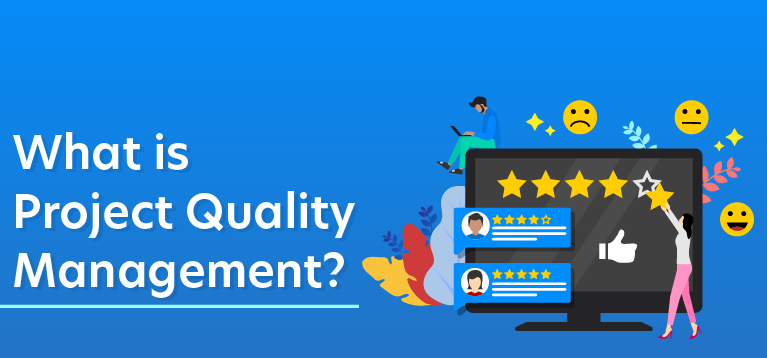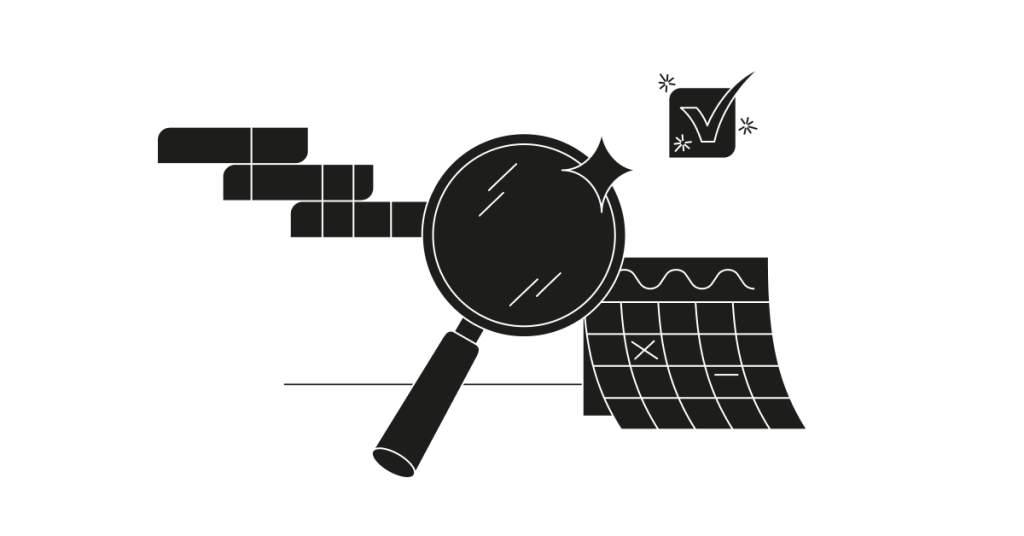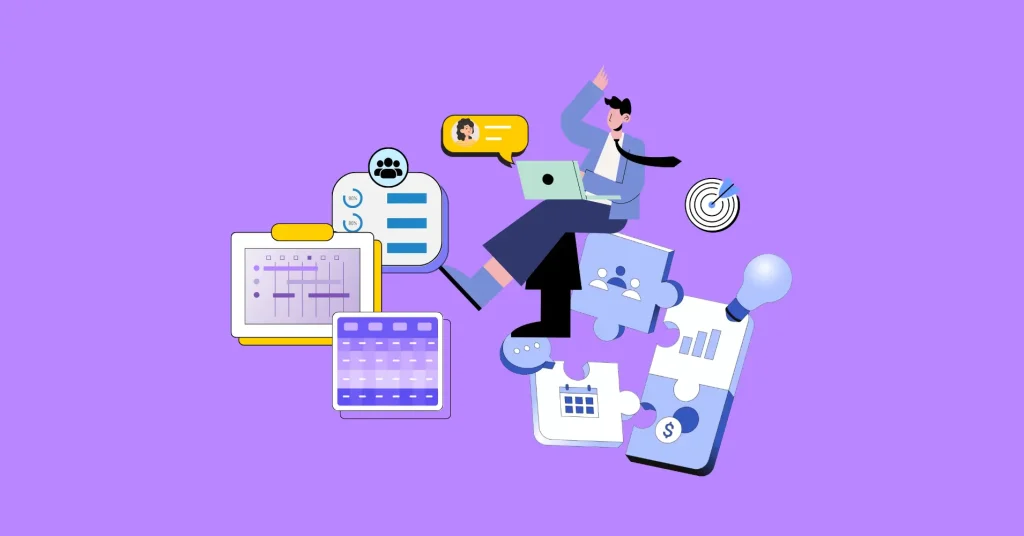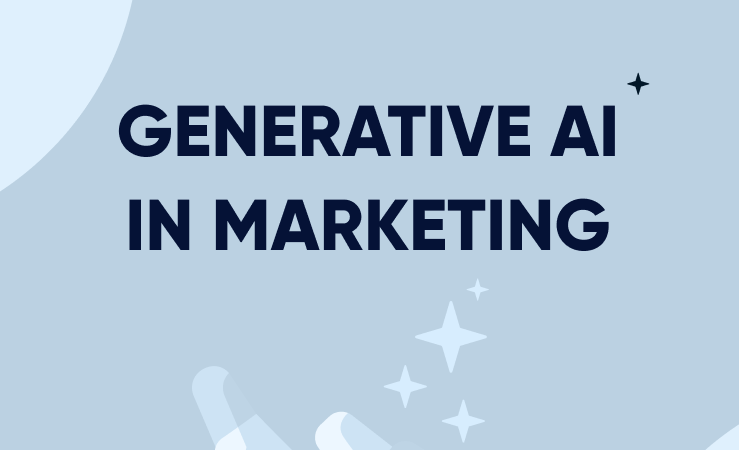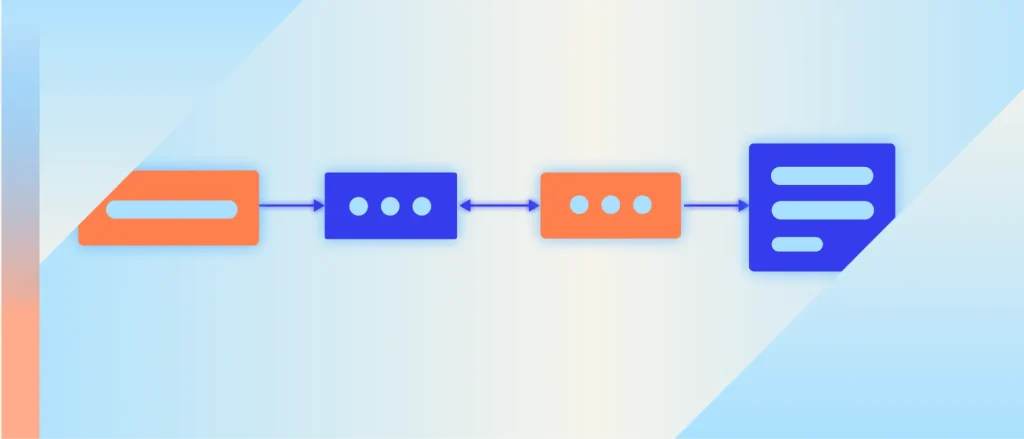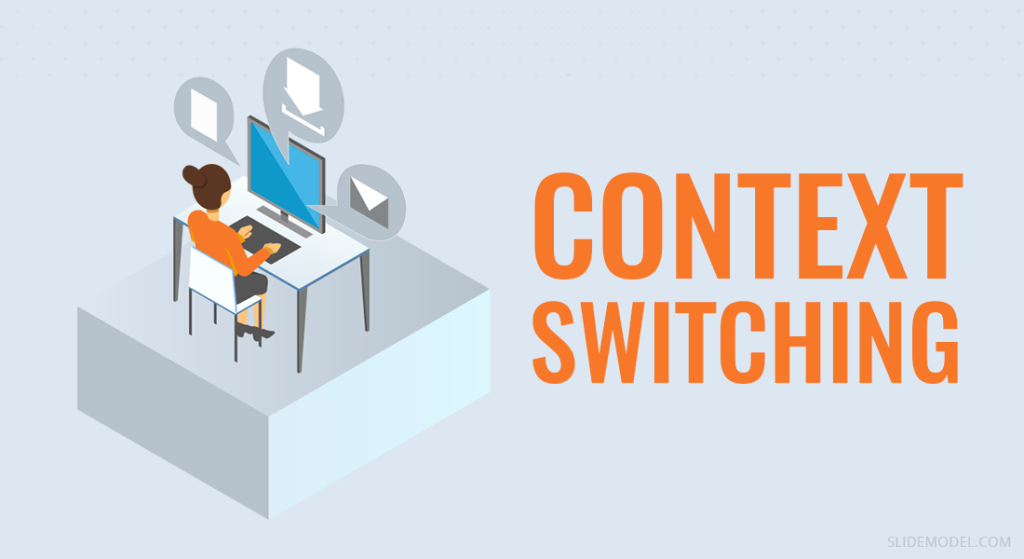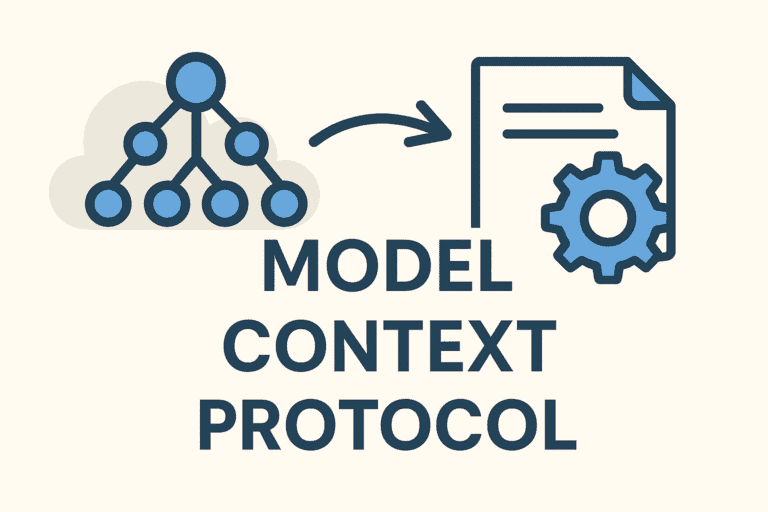In today’s fast-paced business environment, effective project management is crucial for ensuring the successful execution of tasks and projects. Whether you’re leading a small team or managing a large-scale project, having the right project management tool can make all the difference. With a plethora of options available in the market, choosing the right tool can be overwhelming. That’s why it’s essential to understand the key features to look for in a project management tool to ensure it aligns with your team’s needs and workflows.
Importance of Choosing the Right Project Management Tool
Picking the right tool for managing business projects is like laying a solid foundation for success. A good tool helps you plan, organize, and get tasks done, so your team can work well together and hit their targets. Whether you’re setting schedules, assigning resources, or checking how things are going, a dependable project management tool makes everything smoother, improves talking, and boosts how much work gets done.

User-Friendly Interface
In today’s digital landscape, where time is of the essence, having a user-friendly interface in your project management tool is paramount. A cluttered or confusing interface can hinder productivity and lead to frustration among team members. Let’s explore the key aspects of a user-friendly interface that you should look for when evaluating project management tools.
Intuitive Design for Easy Navigation
An intuitive design is the cornerstone of a user-friendly interface. When team members can easily navigate through the tool without having to spend excessive time searching for features or figuring out how to perform tasks, productivity increases exponentially. Here are some elements to consider:
- Clear Navigation Menus: The tool should have clearly labeled menus and navigation buttons that guide users to different sections and features effortlessly.
- Consistent Layout: Consistency in layout and design elements across the tool ensures that users can quickly familiarize themselves with the interface and find what they need without confusion.
- Intuitive Icons and Symbols: Icons and symbols should be intuitive and easily recognizable, helping users understand their functions at a glance.
- Customizable Dashboard: A customizable dashboard allows users to personalize their workspace, organizing information and features based on their preferences and workflow.
- Search Functionality: An effective search feature enables users to quickly locate specific tasks, projects, or information within the tool, saving time and enhancing efficiency.
Accessibility Across Devices for Seamless User Experience
In today’s mobile-centric world, the ability to access project management tools across various devices is essential for maintaining productivity, especially for remote or on-the-go teams. Here’s what to look for in terms of accessibility:
- Responsive Design: The tool should have a responsive design that adapts seamlessly to different screen sizes and resolutions, providing a consistent user experience across desktops, laptops, tablets, and smartphones.
- Mobile App Compatibility: A dedicated mobile app enhances accessibility, allowing team members to access and manage projects anytime, anywhere, even when they’re away from their desks.
- Offline Access: Some project management tools offer offline access, allowing users to continue working on tasks and projects even without an internet connection, ensuring uninterrupted productivity.
- Cross-Platform Compatibility: Ensure that the tool is compatible with multiple operating systems (e.g., Windows, macOS, iOS, Android) to accommodate users with diverse device preferences.
Task Management
Efficient task management lies at the heart of successful project execution. A robust project management tool should empower teams to create, assign, and track tasks seamlessly while providing features for prioritization and deadline management. Let’s delve into the key components of effective task management features that you should prioritize when choosing a project management tool.
Ability to Create, Assign, and Track Tasks Efficiently
- Task Creation: Look for a project management tool that allows users to create tasks easily. The process should be straightforward, with options to add task descriptions, due dates, priority levels, and assignees.
- Task Assignment: The ability to assign tasks to specific team members ensures accountability and clarity regarding responsibilities. Ensure that the tool allows for easy task assignment, with options to assign tasks to individuals or groups.
- Task Tracking: Tracking task progress is essential for monitoring project milestones and identifying potential bottlenecks. Choose a tool that provides clear visibility into task status, allowing users to track progress, view completed tasks, and identify overdue tasks at a glance.
- Task Dependencies: Some projects require tasks to be completed in a specific sequence. Look for a tool that supports task dependencies, allowing users to define relationships between tasks and ensure that they are completed in the correct order.
- Task Comments and Updates: Effective communication is key to successful task management. Ensure that the tool allows for comments and updates to tasks, facilitating collaboration and providing context for task-related discussions.
Prioritization and Deadline Management Features for Effective Task Management
- Priority Levels: Tasks should be prioritized based on their importance and urgency. Look for a project management tool that offers priority levels or tags, allowing users to categorize tasks as high, medium, or low priority.
- Deadline Management: Meeting project deadlines is crucial for project success. Choose a tool that enables users to set deadlines for tasks and projects, with notifications and reminders to ensure timely completion.
- Gantt Charts: Gantt charts provide a visual representation of project timelines, tasks, and dependencies. Look for a tool that offers Gantt chart functionality, allowing users to visualize project schedules, identify critical paths, and adjust timelines as needed.
- Task Templates: For recurring tasks or projects with similar workflows, task templates can save time and ensure consistency. Ensure that the tool supports task templates, allowing users to create predefined task lists and workflows for recurring projects.
- Time Tracking: Some project management tools offer built-in time-tracking features, allowing users to track the time spent on tasks. Consider whether time-tracking functionality is essential for your team’s workflow and choose a tool accordingly.
Collaboration Tools
Collaboration lies at the heart of successful project management, enabling teams to work together seamlessly towards common goals. A robust project management tool should offer a variety of collaboration features to facilitate communication, file sharing, and teamwork. Let’s explore the key collaboration tools that you should prioritize when evaluating project management tools.
Real-time Communication Capabilities for Team Collaboration
- Chat and Messaging: Look for a project management tool that provides built-in chat and messaging features, allowing team members to communicate in real time. Whether it’s one-on-one chats, group discussions, or project-specific channels, real-time communication fosters collaboration and enables quick decision-making.
- Notifications and Alerts: Notifications and alerts keep team members informed about important updates, task assignments, and deadlines. Ensure that the tool offers customizable notification settings, allowing users to stay updated without being overwhelmed by unnecessary alerts.
- @Mentions and Notifications: @Mentions allow users to direct messages to specific team members, ensuring that relevant stakeholders are notified about important updates or requests. Look for a tool that supports @mentions and notifications to streamline communication and enhance collaboration.
- Discussion Threads: Some project management tools offer discussion threads or comment sections within tasks or projects, allowing team members to collaborate and share ideas directly within the context of the task or project. Discussion threads facilitate focused communication and reduce the need for lengthy email chains.
File Sharing and Editing Features to Enhance Teamwork
- Centralized File Storage: Choose a project management tool that offers centralized file storage, allowing team members to access project-related documents, images, and other files in one location. Centralized file storage eliminates the need for multiple file-sharing platforms and ensures that everyone has access to the latest versions of documents.
- File Sharing: The ability to share files securely within the project management tool is essential for collaboration. Look for a tool that offers easy file-sharing functionality, with options to share files directly within tasks, projects, or chat conversations.
- Version Control: Version control features ensure that team members are always working with the latest version of a document. Choose a project management tool that supports version control, allowing users to track changes, revert to previous versions if necessary, and avoid confusion caused by multiple versions of the same document.
- Real-time Editing: Some project management tools offer real-time editing features, allowing multiple team members to collaborate on documents simultaneously. Real-time editing enhances teamwork and accelerates the document review and approval process.
Time Tracking
Effective time management is crucial for project success, making time-tracking features indispensable in project management tools. These features not only help monitor individual and team productivity but also aid in resource allocation and project planning. Let’s explore the essential aspects of time-tracking functionalities that you should consider when evaluating project management tools.
Tools for Tracking Time Spent on Tasks and Projects
- Task Timers: Look for project management tools that offer built-in task timers, allowing users to track the time spent on specific tasks accurately. Task timers can be started and stopped as needed, providing precise measurements of task durations.
- Manual Time Entry: In addition to task timers, the ability to manually enter time spent on tasks is essential for flexibility and accuracy. Choose a tool that allows users to log their time manually, providing options to specify start and end times or enter total hours worked.
- Timesheets: Timesheets consolidate time-tracking data for individual team members or projects, providing a comprehensive overview of time allocations and workloads. Ensure that the project management tool offers customizable timesheets with options to view and export time-tracking data for analysis.
- Time Tracking Integrations: Some project management tools offer integrations with dedicated time tracking software or productivity apps, streamlining the time tracking process and providing additional features such as invoicing and payroll management. Consider whether integration with external time-tracking tools is important for your workflow.
Reporting Functionalities to Monitor Project Progress and Resource Allocation
- Project Time Reports: Project time reports provide insights into how time is being allocated across tasks and projects, helping project managers monitor progress and identify potential bottlenecks. Choose a project management tool that offers customizable time reports with filters for date ranges, project categories, and team members.
- Resource Utilization Reports: Resource utilization reports analyze how team members’ time is being allocated across different projects and tasks, highlighting areas of overallocation or underutilization. Ensure that the tool provides resource utilization reports to optimize resource allocation and workload management.
- Budget Tracking: Budget tracking features allow project managers to monitor project expenses and compare them against planned budgets. Look for a project management tool that offers budget tracking functionalities, with options to set project budgets, track expenses, and generate budget variance reports.
- Forecasting and Predictive Analytics: Advanced project management tools may offer forecasting and predictive analytics features, leveraging historical time-tracking data to predict future project timelines and resource requirements. Consider whether forecasting capabilities are important for your long-term project planning and resource management needs.
Customization Options
Customization plays a pivotal role in ensuring that a project management tool meets the unique needs and workflows of your team. A tool with robust customization options empowers users to tailor the platform according to their preferences, enhancing usability and productivity. Let’s explore the key aspects of customization options that you should consider when evaluating project management tools.
Flexibility to Tailor the Tool to Suit Team Workflows
- Workflow Customization: Look for a project management tool that offers flexibility in customizing workflows to align with your team’s unique processes and methodologies. Whether you follow agile, waterfall, or hybrid project management methodologies, the tool should adapt to accommodate your preferred workflow.
- Task Customization: Choose a tool that allows users to customize task fields and attributes to capture relevant information specific to your projects. Customizable task fields enable users to tailor task details, such as priority levels, statuses, and tags, to match your team’s terminology and requirements.
- Permission Settings: Customizable permission settings allow administrators to define access levels and permissions for different team members based on their roles and responsibilities. Ensure that the project management tool offers granular permission settings, allowing administrators to control access to sensitive information and features.
- Workflow Automation: Automation features enable users to automate repetitive tasks and streamline workflows, saving time and reducing manual effort. Look for a project management tool that offers workflow automation capabilities, such as task dependencies, recurring task creation, and automated notifications.
Customizable Dashboards and Project Views for Personalized Usage
- Dashboard Customization: Dashboards serve as the central hub for monitoring project progress and accessing key information at a glance. Choose a project management tool that offers customizable dashboards, allowing users to personalize their dashboard layout, widgets, and key performance indicators (KPIs) based on their preferences and priorities.
- Project Views: Different projects may require different views and layouts to accommodate varying project requirements and stakeholders’ preferences. Ensure that the project management tool offers customizable project views, with options to customize project layouts, columns, and filters to suit specific project needs.
- Reporting Customization: Reporting is essential for tracking project performance and communicating project status to stakeholders. Look for a project management tool that offers customizable reporting features, allowing users to create and customize reports tailored to their specific requirements, such as project progress reports, resource allocation reports, and budget variance reports.
- Personalization Options: Personalization options, such as customizable themes, color schemes, and branding, enable users to tailor the look and feel of the project management tool to reflect their organization’s brand identity and preferences. Consider whether personalization options are important for maintaining brand consistency and enhancing user engagement.
Reporting and Analytics
In today’s data-driven world, the ability to generate insights and analyze project data is essential for making informed decisions and driving project success. Robust reporting and analytics features in a project management tool empower teams to evaluate project performance, identify trends, and pinpoint areas for improvement. Let’s explore the key aspects of reporting and analytics functionalities that you should consider when selecting a project management tool.
Generation of Insights through Project Data Analysis
- Data Visualization: Choose a project management tool that offers data visualization capabilities, such as charts, graphs, and dashboards, to present project data in a visually appealing and easy-to-understand format. Data visualization enhances comprehension and enables stakeholders to identify trends and patterns quickly.
- Customizable Reports: Look for a tool that allows users to create customizable reports tailored to their specific needs and preferences. Customizable reports enable users to focus on the metrics that matter most to them, whether it’s project progress, team productivity, or resource utilization.
- Advanced Analytics: Some project management tools offer advanced analytics features, such as predictive analytics and machine learning algorithms, to provide deeper insights into project performance and predict future trends. Consider whether advanced analytics capabilities are essential for your project management needs.
Reporting Features to Evaluate Project Performance and Identify Areas for Improvement
- Project Performance Reports: Project performance reports provide a comprehensive overview of project status, including key metrics such as task completion rates, milestone achievements, and budget utilization. Choose a project management tool that offers project performance reports to track progress and assess project health.
- Task and Issue Tracking: Task and issue tracking reports help identify bottlenecks, track resolution times, and ensure that tasks are completed on time. Look for a tool that offers task and issue tracking reports with filters for status, priority, and assignee, allowing users to drill down into specific areas for improvement.
- Resource Allocation Reports: Resource allocation reports analyze how resources, such as team members and budget, are being allocated across projects and tasks. Ensure that the tool provides resource allocation reports to optimize resource utilization, identify overallocation or underutilization, and make data-driven decisions about resource allocation.
- Risk and Issue Reports: Risk and issue reports highlight potential risks and issues that may impact project delivery, allowing project managers to proactively mitigate risks and address issues before they escalate. Choose a project management tool that offers risk and issue reports with options to prioritize and assign tasks for resolution.
Integration Capabilities
Integration capabilities play a vital role in ensuring seamless collaboration and workflow efficiency within a project management ecosystem. A project management tool that integrates seamlessly with other essential tools and platforms can streamline workflows, enhance productivity, and simplify data exchange. Let’s explore the key aspects of integration capabilities that you should consider when evaluating project management tools.
Seamless Integration with Other Essential Tools and Platforms
- Collaboration Tools: Look for a project management tool that integrates seamlessly with popular collaboration tools such as Slack, Microsoft Teams, or Google Workspace. Integration with collaboration tools facilitates real-time communication, file sharing, and collaboration, enabling teams to work more efficiently.
- Calendar and Email: Integration with calendar and email platforms such as Google Calendar, Outlook, or Apple Calendar allows users to sync project deadlines, meetings, and milestones with their existing calendars. This ensures that team members stay updated on project schedules and deadlines without switching between multiple tools.
- Document Management: Choose a project management tool that integrates with document management platforms like Google Drive, Dropbox, or SharePoint. Integration with document management tools simplifies file sharing, version control, and document collaboration, ensuring that team members have access to the latest project documents.
- Customer Relationship Management (CRM): For projects involving client interactions, integration with CRM platforms like Salesforce or HubSpot can be beneficial. CRM integration allows project teams to access client information, track communications, and manage client relationships directly within the project management tool.
Compatibility with Popular Software Applications to Streamline Workflows
- Productivity Tools: Ensure that the project management tool is compatible with popular productivity tools such as Microsoft Office 365, Google Workspace, or Adobe Creative Cloud. Compatibility with productivity tools enables seamless document editing, task management, and collaboration within familiar software environments.
- Development and IT Tools: For software development projects, integration with development and IT tools such as GitHub, Jira, or Bitbucket is essential. Integration with development tools allows developers to track code changes, manage issues, and collaborate on projects within the project management tool.
- Marketing and Design Tools: Integration with marketing and design tools like Adobe Creative Cloud, Canva, or Mailchimp can streamline workflows for marketing and design projects. Compatibility with marketing and design tools enables seamless collaboration on design assets, email campaigns, and marketing materials within the project management tool.
- Finance and Accounting Software: For projects involving budget management and financial tracking, integration with finance and accounting software such as QuickBooks or Xero can be valuable. Integration with finance and accounting software facilitates expense tracking, budget management, and financial reporting within the project management tool.
Mobile Accessibility
Mobile accessibility is crucial for modern project management, allowing team members to stay connected and productive, even when they’re on the go. A project management tool with a dedicated mobile app and features optimized for mobile usage ensures that team members can access project information, communicate with colleagues, and manage tasks from anywhere. Let’s explore the key aspects of mobile accessibility that you should consider when selecting a project management tool.
Mobile App Availability for Remote and On-the-Go Access
- Dedicated Mobile App: Look for a project management tool that offers a dedicated mobile app for iOS and Android devices. A dedicated mobile app provides consistent access to project information and features, allowing team members to stay connected and productive while away from their desks.
- Cross-Platform Compatibility: Ensure that the mobile app is compatible with a wide range of devices and operating systems, including smartphones and tablets. Cross-platform compatibility ensures that team members can access the mobile app regardless of the device they use, enhancing accessibility and flexibility.
- Offline Access: Choose a project management tool that offers offline access through the mobile app, allowing team members to view and edit project information even when they’re not connected to the internet. Offline access ensures uninterrupted productivity, especially in areas with limited or no connectivity.
Features Optimized for Mobile Usage to Enhance Productivity
- Task Management on the Go: Look for mobile features that enable task management on the go, such as creating, assigning, and updating tasks directly from the mobile app. Task management features ensure that team members can stay organized and productive, even when they’re away from their desks.
- Real-Time Collaboration: Mobile apps should support real-time collaboration features, such as chat, comments, and notifications, to facilitate communication and collaboration among team members. Real-time collaboration ensures that team members can stay connected and aligned, regardless of their location.
- Mobile-Friendly Interface: Ensure that the mobile app has a user-friendly interface optimized for mobile usage, with intuitive navigation and responsive design. A mobile-friendly interface enhances usability and ensures a seamless user experience on smartphones and tablets.
Security and Data Protection
Security and data protection are paramount when choosing a project management tool, especially when dealing with sensitive project information and confidential data. A project management tool should implement robust security measures and adhere to industry standards for data protection to safeguard sensitive project information. Let’s explore the key aspects of security and data protection that you should consider when evaluating project management tools.
Robust Security Measures to Safeguard Sensitive Project Information
- User Authentication and Authorization: Choose a project management tool that implements strong user authentication and authorization mechanisms to control access to project information. User authentication ensures that only authorized users can access the project management tool, while authorization controls permissions and privileges for different user roles.
- Data Encryption: Ensure that the project management tool encrypts data both in transit and at rest to protect sensitive project information from unauthorized access and interception. Data encryption ensures that project data remains confidential and secure, even if it’s intercepted during transmission or stored on servers.
- Multi-Factor Authentication: Look for a project management tool that supports multi-factor authentication (MFA) to add an extra layer of security to user accounts. MFA requires users to provide multiple forms of verification, such as a password and a one-time code sent to their mobile device, to access the project management tool, reducing the risk of unauthorized access due to stolen or compromised passwords.
Data Encryption and Compliance with Industry Standards for Data Protection
- Compliance with Data Protection Regulations: Ensure that the project management tool complies with relevant data protection regulations, such as GDPR (General Data Protection Regulation) or HIPAA (Health Insurance Portability and Accountability Act), if applicable to your organization or industry. Compliance with data protection regulations ensures that the project management tool adheres to strict standards for data privacy and security.
- Regular Security Audits and Vulnerability Assessments: Choose a project management tool that undergoes regular security audits and vulnerability assessments to identify and address potential security risks and vulnerabilities. Regular security audits ensure that the project management tool maintains robust security measures and stays resilient against emerging threats and attacks.
- Transparent Data Handling Policies: Ensure that the project management tool has transparent data handling policies and procedures in place, outlining how it collects, stores, and processes project data. Transparent data handling policies assure users regarding the security and privacy of their project information and enable them to make informed decisions about using the tool.
Customer Support and Training
Customer support and training are essential aspects of a project management tool that often determine its usability and effectiveness. Optimal customer support ensures that users can resolve any issues or challenges they encounter while using the tool, while comprehensive training resources empower users to maximize the tool’s capabilities. Let’s explore the key aspects of customer support and training that you should consider when selecting a project management tool.
Customer Support
- Responsive Support Channels: Look for a project management tool provider that offers responsive support channels, such as email, live chat, or phone support. Responsive support ensures that users can quickly reach out to the support team for assistance with any questions or technical issues they encounter.
- Knowledge Base and FAQs: Ensure that the project management tool provider maintains a comprehensive knowledge base and FAQs (Frequently Asked Questions) section on their website. A knowledge base provides users with self-service resources and guides to troubleshoot common issues and learn how to use various features of the tool effectively.
- Community Forums and User Groups: Some project management tool providers host community forums or user groups where users can interact with each other, share best practices, and seek advice from experienced users. Community forums foster collaboration and peer support, enabling users to learn from each other and exchange valuable insights.
Training Resources
- Onboarding Assistance: Choose a project management tool provider that offers onboarding assistance to help new users get started with the tool quickly and efficiently. Onboarding assistance may include personalized training sessions, walkthroughs, and tutorials to familiarize users with the tool’s features and functionalities.
- Video Tutorials and Webinars: Look for a project management tool provider that offers video tutorials and webinars covering various aspects of using the tool. Video tutorials and webinars provide visual demonstrations and step-by-step instructions to help users learn how to use the tool effectively and efficiently.
- Documentation and User Guides: Ensure that the project management tool provider offers comprehensive documentation and user guides that cover all aspects of using the tool. Documentation and user guides provide detailed information about features, settings, and best practices, serving as valuable resources for users at all skill levels.

Conclusion
Selecting the right project management tool is crucial for the success of your projects and the productivity of your team. By prioritizing the 10 essential features outlined in this guide and considering factors such as customer support and training, you can choose a tool that meets your team’s needs and empowers you to achieve project success. Remember to evaluate each feature carefully, considering how it aligns with your team’s workflows and requirements. With the right project management tool in place, you can streamline your processes, enhance collaboration, and drive project success.


